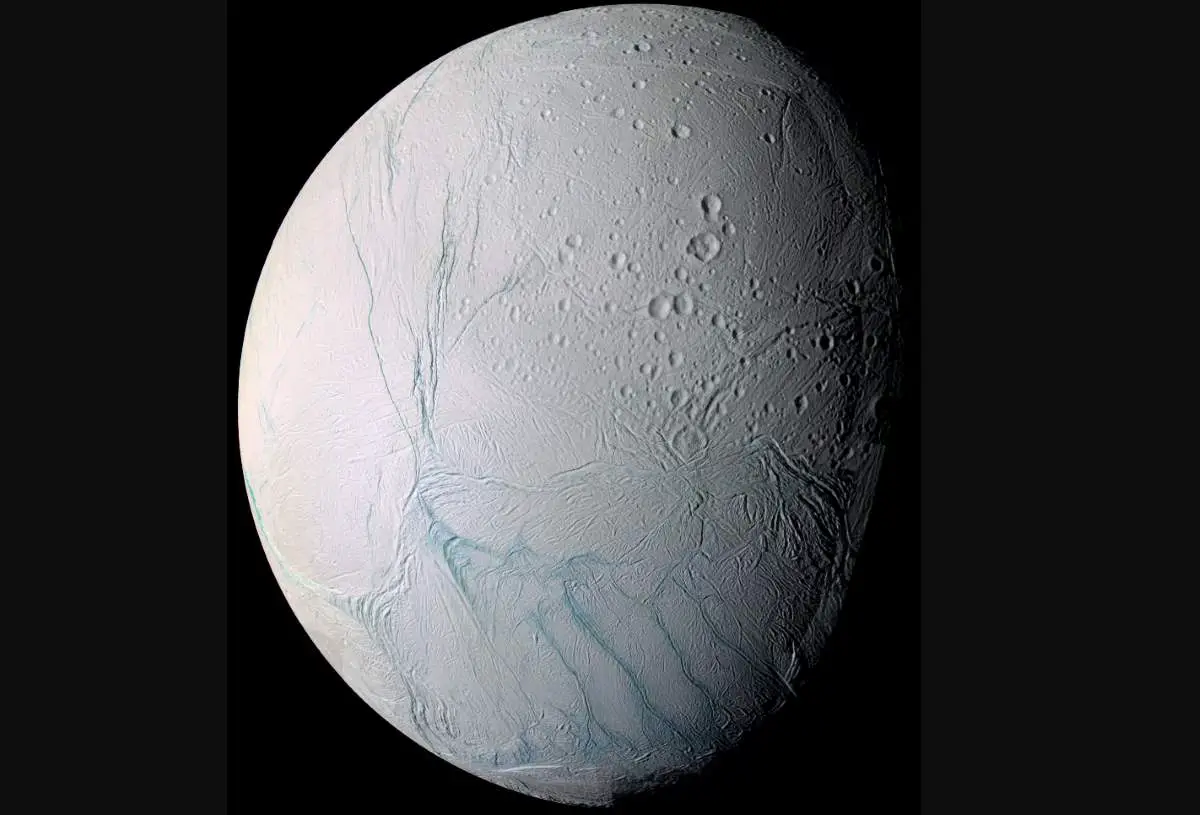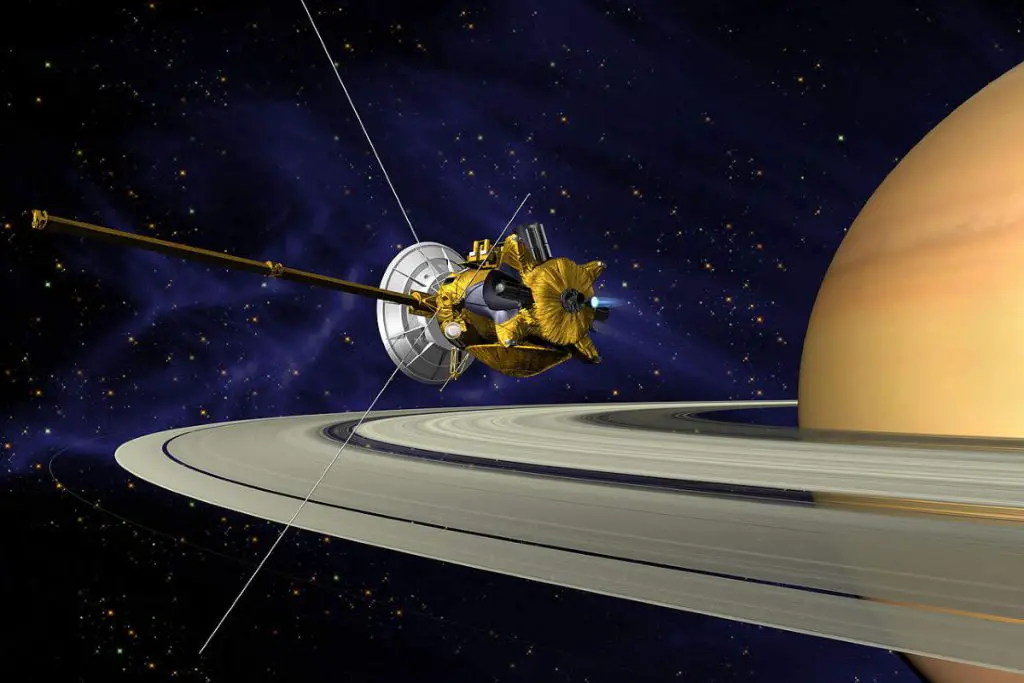NASA has published an amazing video titled “Sounds of Saturn: Hear Radio Emissions of the Planet and Its Moon Enceladus”. The analysis of the data from the Cassini Spacecraft’s Grand Finale orbits showed a surprisingly powerful interaction of plasma waves moving from Saturn to its icy moon Enceladus. Researchers converted the recording of plasma waves into a “whooshing” audio file that we can hear, in the same
Much like air or water, plasma (the fourth state of matter) generates waves to carry energy. The recording was captured by the Radio Plasma Wave Science (RPWS) instrument on September 2, 2017, two weeks before Cassini was deliberately plunged into the atmosphere of Saturn.

Cassini Spacecraft
The Cassini–Huygens mission, commonly called Cassini, was a collaboration between NASA, the European Space Agency (ESA), and the Italian Space Agency (ASI) to send a probe to study the planet Saturn and its system, including its rings and natural satellites.
The Flagship-class robotic spacecraft comprised both NASA’s Cassini probe (the fourth space probe to visit Saturn and the first to enter its orbit) and ESA’s Huygens lander which landed on Saturn’s largest moon, Titan. The spacecraft was named after the Italian astronomer Giovanni Cassini (8 June 1625 – 14 September 1712) and the Dutch astronomer Christiaan Huygens (14 April 1629 – 8 July 1695).
At the end of its mission, the Cassini spacecraft, one of the most important scientific instruments humanity has ever built, executed a “Grand Finale”, a series of 22 orbits that each passed between the planet and its rings. The purpose of this phase was to maximize Cassini’s scientific outcome before the spacecraft was disposed of.
On September 15, 2017, Cassini made its final approach to the giant planet Saturn. But this encounter was like no other. This time, it dived into the planet’s atmosphere, sending science data for as long as its small thrusters could keep the spacecraft’s antenna pointed at Earth. Soon after, Cassini burned up and disintegrated like a meteor. The atmospheric entry of Cassini ended the mission, but analyses of the returned data will continue for many years.

Sources
- Cassini–Huygens on Wikipedia
- Cassini Grand Finale Toolkit on the NASA website
- Space Shuttle Endeavour’s Touchdown Meets Columbia’s Salute [An amazing photo from the past] - February 29, 2024
- Moon Landings: All-Time List [1966-2024] - February 23, 2024
- From Orbit to Ordinary: 10 Earthly Applications of Space Technology - January 23, 2024
